In my last training Fabian Lenz and I discuss pro and con of power management in ESXi.
We thought DPM is mostly used in VDI-environments. In those environments the savings would be the best, because the virtual desktops didn’t work at night and many of the ESXi hosts could be powered off. But DPM ist not the only thing which affects the power consumption. ESXi could use ACPI C- and P-States from the CPU to control the power of the physical cores. Fabian experiements with a bigger VDI environment and gets interessting informations with activated DPM (watch his blog).
To get the control within ESXi you need to change BIOS settings report the C- and P-States to OS.

With this setting ESXi shows in the energy settings menu the status of C-and P-States and the atctive power policy. ESXi has “balanced” set per default. With this setting the CPU never gets the highest performance and would operate at about 80 percent.
With change the setting to “high-performance” the power savings of the CPU would be nothing.
What I want to compare is the difference between the power consumption and the performance of an ESXi host in the “balanced” and “high-perfomance” energy setting.
The Host for this test had following specs:
Fujitsu Primergy RX 300 S8
- 2x Intel Xeon E5-2680 v2
- 512 GB RAM
DELL R710
- 2x Intel Xeon X5670
- 256 GB RAM
All servers running productive with different OS in the guest VMs.
Both settings (“balanced” and “high performance”) was monitored for one hour each setting.
All servers were running balanced for more than one hour. After that the setting “high-performance” was set.
The monitored values were
- Performance graph ready time
- consumed power (watt/live; watt/24h)
DRS was set to conservativ, so no migrations was taken and the same VMs were on the test hosts.
Fujitsu Primergy RX 300 S8
CPU
After switching to high performance the chart with the CPU ready shows “falling” values.
The average CPU wait times of one Citrix server were:
- 171ms before switching the policy
- 148ms 30 minutes after switching the policy (-15%)
- 124ms one hour after switching the policy (-27%)
Not all guests showed those nice boost. Some guests only got 5% boost. But the average ready times were reduced be 17%.
Power consumption
The power consumption increased by 5%
24 hours
I want to complete the comparison with the data of 24 hours.
CPU ready time ESXi host
To get an overall view I compare the CPU ready times of the host for 24 hours.
As you can see the average ready times decreases by over 30%.
Power consumption
With a wider view an the power consumption you can see an increase of 12% (average consumption 220w to 249w).
DELL R710
CPU
Wait times were although reduced on the DELL R710. The values lay between 10% and 63%!
The average value was 27% ready time.
Power consumption
For the power consumption the performance graph is missing. But the average consumption increased the same way as the Fujitsu RX300 (10%)
Conclusion
At the end of the day you have to ask: “What ist better for my environment?” If you got problems with cpu use or your users reports bad desktop experience on their virtual desktops / apps you need to activate the “high-perfomance” setting in the energy menu. A new host gives you additional power but costs a lot. Your HA capacity grows but the overall power consumption too.
IMO you set all hosts to “high-perfomance”. Everytime! The idea of virtualization is the consolidation of hardware. If you are using only 80% of your hardware the consolidation is not effective.
A hardware scaleup or cycle might be obsolete in some cases.
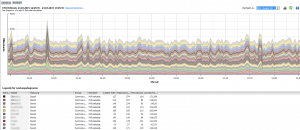
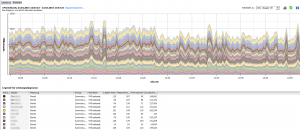





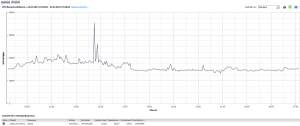


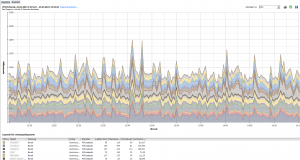
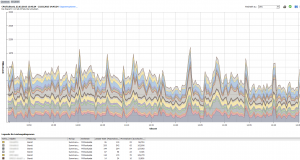
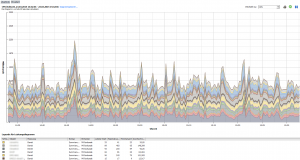







Leave a Reply